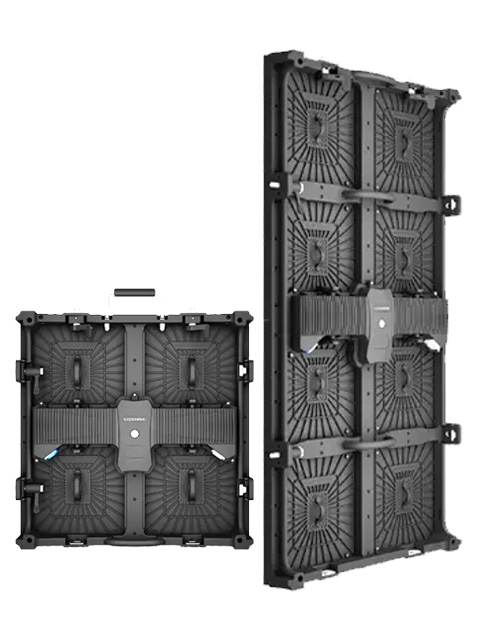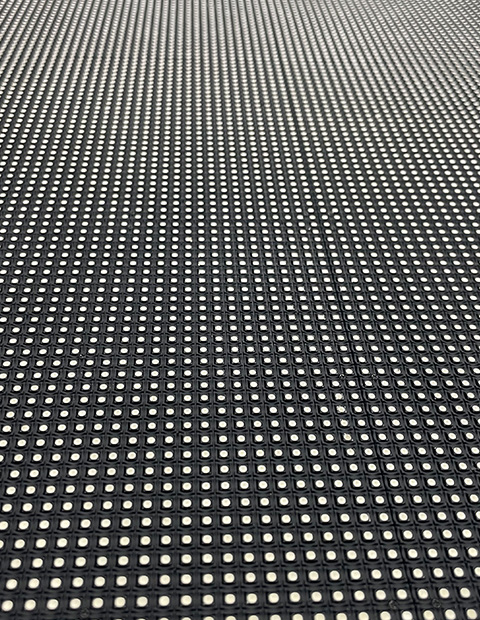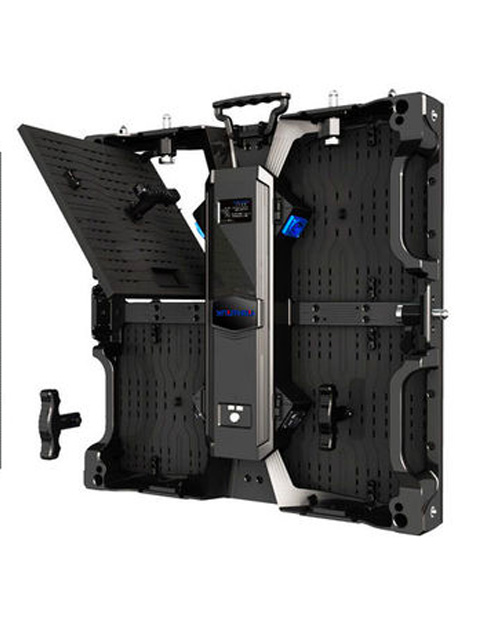Ever organized an event and wondered how big of an LED screen you need as a backdrop? Choosing the right size LED stage screen can seem complicated, but it doesn’t have to be. As an event planner, you want to make sure your stage LED screen is large enough to create an impact, but not so huge it overpowers the whole stage. The good news is with some simple calculations, you can determine the perfect LED screen size for your event in no time.
Measuring Your Stage and Venue
The first step is to measure your stage area and the venue space. To determine the ideal size, measure the width and height of your stage. For most events, an LED screen should cover at least 2/3 of the stage. So, if your stage is 20 feet wide and 10 feet tall, aim for a screen around 13 to 15 feet wide and 6 to 8 feet high.
Next, consider the size of your venue and how far the audience will be from the stage. The larger the venue and further the audience is seated, the bigger your stage LED screen should be. As a general rule of thumb, the screen should appear to take up at least 1/3 of a viewer’s field of vision from any seat.
You’ll also want to account for the resolution of the screen. For text and graphics, choose at least a 10-millimeter pixel pitch. For video, go with 6 millimeters or less for the best image. The higher the resolution, the closer viewers can sit to the screen without the image appearing pixelated.
Think about sightlines and visibility too. Make sure no venue equipment like lighting rigs, or decor will block views of the screen from any seat. It may be worth doing a site visit to determine the optimal screen size and position before investing in a new or used LED wall.
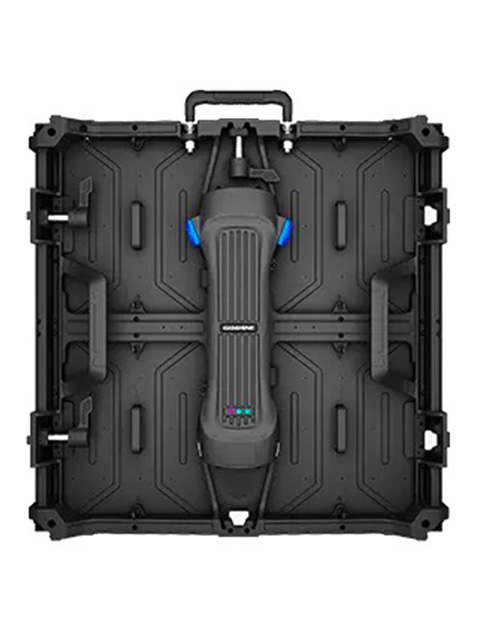
Determining the Aspect Ratio for Your LED Stage Screen
To determine the perfect size of stage LED screen for your event, you’ll need to consider the aspect ratio. The proportional relationship between the screen’s width and height is known as the aspect ratio. For most events, a 16:9 widescreen aspect ratio is ideal since it’s optimized for displaying multimedia content.
As the industry is gradually phasing out the 4:3 format, the most common ratios for stage LED screens are (such as 16:10 or 16:9). However, if you are currently using a 4:3 format, don’t rush to switch to a widescreen because it may not be cost-effective.
If you plan to use the system to show more than just song lyrics, you should determine the height of the screen based on the distance from the screen to the last row of the audience. Generally speaking, the height of the screen should be 1/6 to 1/10 of that distance. In other words, if the distance from the stage LED screen to the last row is 60 feet (18 meters), the height of the screen should be between 6 and 10 feet (1.8 to 3 meters). The width is calculated based on the aspect ratio, and if you choose a 16:10 ratio, the size of the screen may be about 9.6 feet wide x 6 feet high (2.9 meters x 1.8 meters), or up to 16 feet wide x 10 feet high (4.8 meters x 3 meters). In general, many professionals consider a 1/8 ratio to be an acceptable size standard.
A few questions to ask yourself:
How far away from the screen will the audience be? The further away, the larger the screen size needed for good visibility. For small events up to 150 people, a 6 to 8-foot screen should suffice. For larger crowds, consider 10 feet or bigger.
What type of content will you be displaying? If it’s mainly video, slides or live camera feeds, a widescreen is recommended. For text-heavy presentations, a 4:3 square screen may work better.
What’s your budget? LED screen prices vary greatly based on the resolution, brightness, size, and brand. You’ll pay more for a high-resolution, super-bright jumbo screen versus a smaller basic model. Consider renting if cost is a concern.
Where will you place the screen? Make sure you have enough space for the screen size you need. Account for accessibility and visibility from all areas of your venue.
By determining the aspect ratio, screen size, resolution, brightness, content type, and budget, you’ll be able to choose the perfect stage LED screen. With the right screen, your visuals will captivate audiences and bring your event vision to life.
Calculating the Minimum Screen Size Based on Audience Viewing Distance
To ensure everyone in your audience can see and enjoy your LED stage screen, you need to calculate the minimum size required based on the viewing distance. The viewing distance refers to the farthest seat from the stage. Here are the steps to determine the minimum screen size:
· Measure the viewing distance
Use a measuring tape to measure the distance from the farthest seat in your venue to the stage. This is your maximum viewing distance. For example, if the back row is 50 feet from the stage, your viewing distance is 50 feet.
· Determine the minimum screen size
For every 10 feet of viewing distance, your minimum screen size should be at least 10 feet wide. So if your viewing distance is 50 feet, your minimum screen size would be 50 feet wide (5 x 10 feet). As a rule of thumb, the wider and taller the screen, the better. Bigger is always better for audience viewing and engagement.
· Consider screen resolution
In addition to size, you need to think about resolution. For audiences 50 feet or more from the stage, a high-resolution screen of at least HD or full HD (1920 x 1080 pixels) is recommended. 4K or 8K resolution is even better. The higher the resolution, the more detail and clarity for those in the back rows.
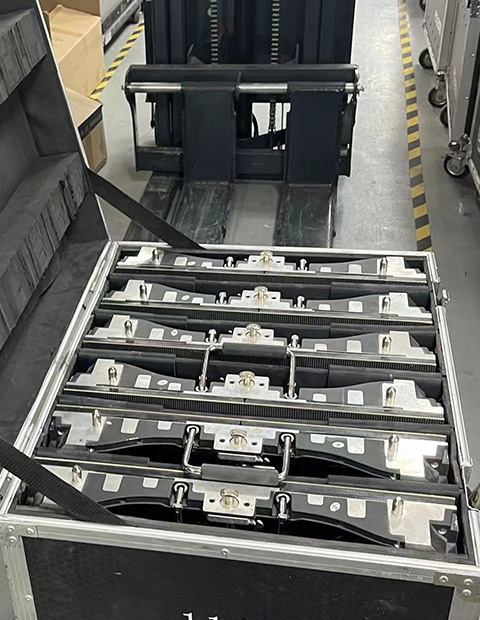
Considering Additional Factors
Once you’ve determined the optimal size for your stage LED screen based on venue specs, there are a few other factors to keep in mind before making a final decision.
· Content
Consider what visuals and videos you want to display on the screen. If you plan to show highly detailed graphics, text, or footage, you’ll want higher resolution and possibly a larger screen so attendees can see everything clearly. For a concert, a lower resolution may suffice for psychedelic backgrounds and effects. Think about how various screen sizes and resolutions will impact the audience experience for your particular event.
· Budget
LED screen prices vary greatly based on size, resolution, brightness, and other features. Smaller mobile or modular LED panels tend to cost less than extremely large, high-definition screens. Determine how much you can allocate for screen rental to choose options that fit your budget. You may need to make some compromises on size or resolution to lower costs. Some companies may offer package deals and discounts for long-term or repeat customers.
· Additional Equipment
Don’t forget that you may require additional gear to set up and operate an LED screen at your event. This could include a processor, video mixer, cabling, stage lighting, and a control system to manage the screen. Factor in the costs to rent or buy any necessary equipment. You’ll also want technicians on hand who know how to properly set up and control the screen before, during, and after your event.
Considering these additional factors along with optimal sizing will help ensure you choose an LED stage screen that achieves the visual impact you want at a price you can afford. With the right screen and team, you can transform any venue into an immersive experience for your audience.
Common Indoor and Outdoor Stage LED Display Sizes
| Environment | Size | Common Applications |
|---|---|---|
| Indoor | Small | 2x2m, 3x2m – Conference rooms, small exhibitions, retail advertising |
| Medium | 4x3m, 6x4m – Shopping centers, large conference rooms, educational institutions, corporate lobbies | |
| Large | 8x5m, 10x6m or larger – Concerts, large conferences, indoor sports events | |
| Outdoor | Small | 3x2m, 4x3m – Commercial streets, small billboards, event promotions |
| Medium | 6x4m, 8x5m – Squares, exterior walls of sports venues, highway billboards | |
| Large | 10x6m, 12x8m or larger – Large stadiums, music festivals, major outdoor events |
Conclusion
Few tips to help you calculate the perfect LED stage screen size for your next big event. Don’t get overwhelmed by all the options, just start with the basics. Figure out how far back your audience will be, measure the area you have to work with and determine your aspect ratio based on the content you’ll be displaying. Then you can explore pixel pitch, brightness, and other specs to find panels that will really make your visuals pop. Most rental companies have experts on staff to help guide you to the right solution for your needs and budget. With the right screen, you’ll put on a show people will be talking about for years to come. Now go dazzle them!
Stage LED screens FAQS:
How to calculate stage LED screen size?
The most commonly used standard aspect ratio for video and main screens is 16:9. You can’t go wrong with this format for stage LED screens either.
Aspect ratio refers to the relationship between the width and height of images and digital screens. The first number represents the width, and the second number represents the height.
- A 1:1 aspect ratio is the width and height of the screen are equal, forming a square screen.
- A 2:1 aspect ratio is the height is twice the width, forming a horizontal screen.
- A 2:3 aspect ratio is an example of a vertical screen, where the height is greater than the width.
For the height of the LED screen for stage, it is acceptable to maintain a ratio of 1/6 to 1/10 between the distance from the screen to the last row of audience and the target height. That is, if the distance from your stage background LED screen to the last row of audience is 21 meters, then the height of your LED screen should be between 2.1 meters and 3.5 meters.
Why should you pay attention to pixel pitch and viewing angle when you purchase or rent a stage LED screen?
When planning a stage event, the LED screen is not only the background, but also the core of conveying visual information. In order to ensure that the audience can immerse themselves in a clear and vivid visual feast, it is crucial to choose a suitable LED screen.
Pixel pitch is one of the key considerations, which is directly related to the optimal viewing distance between the audience and the screen. The right pixel pitch allows the audience to enjoy a delicate, grain-free picture regardless of distance, thereby improving the overall audio-visual experience.
At the same time, viewing angle is also a factor that cannot be ignored. It determines the clarity and color performance of the picture when the audience views the screen at different positions. Therefore, when choosing an LED screen, it is necessary to determine the most suitable model based on the layout of the auditorium and the expected viewing distance.
For close-up viewing occasions, such as stage performances or small exhibitions, we recommend choosing a 1mm to 3 mm or less LED screen. For large outdoor events or long-distance viewing occasions, you can consider slightly larger pixel pitches (such as 3 to 6 mm or higher) LED screens to balance cost and visual effects.
